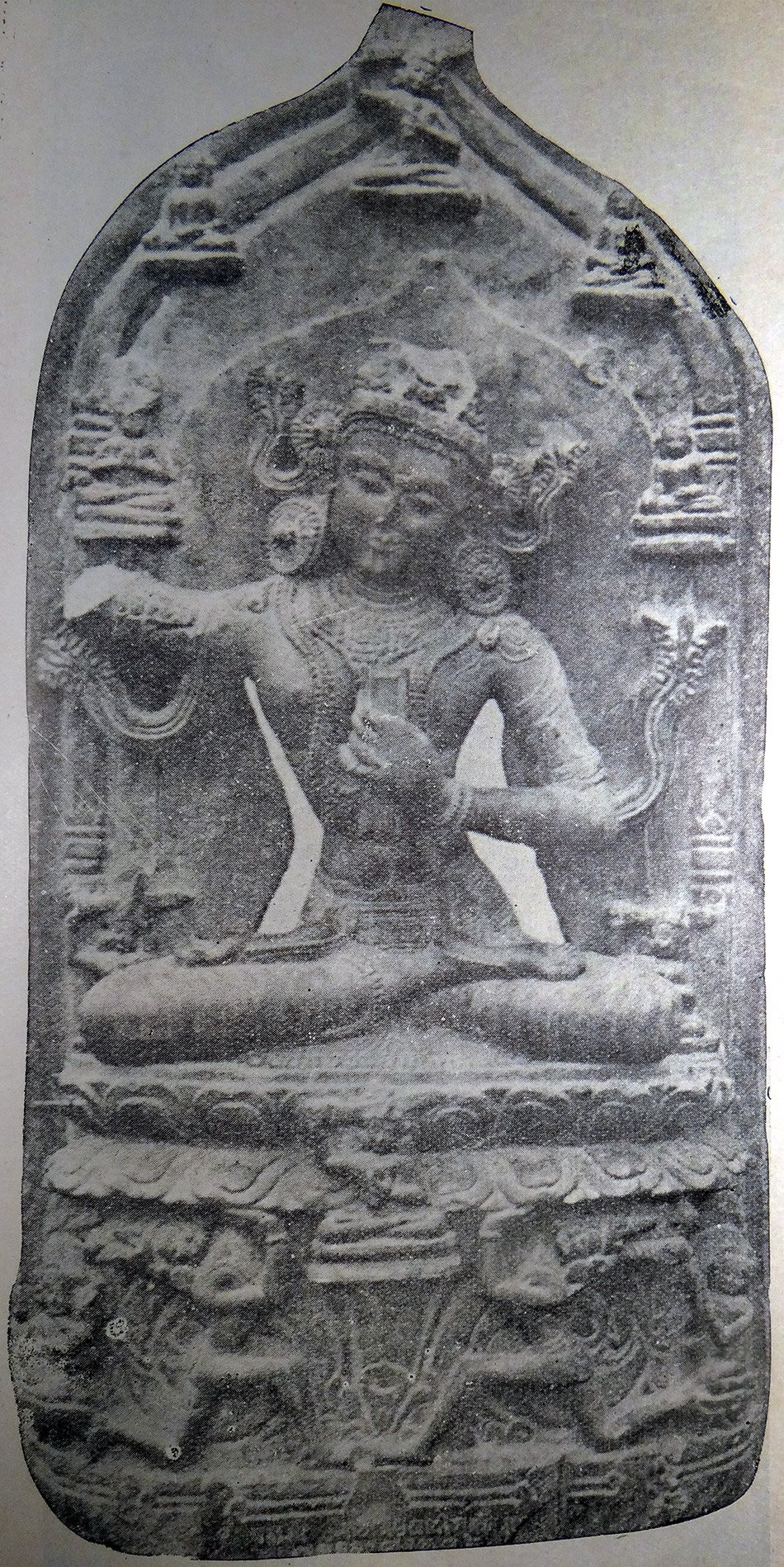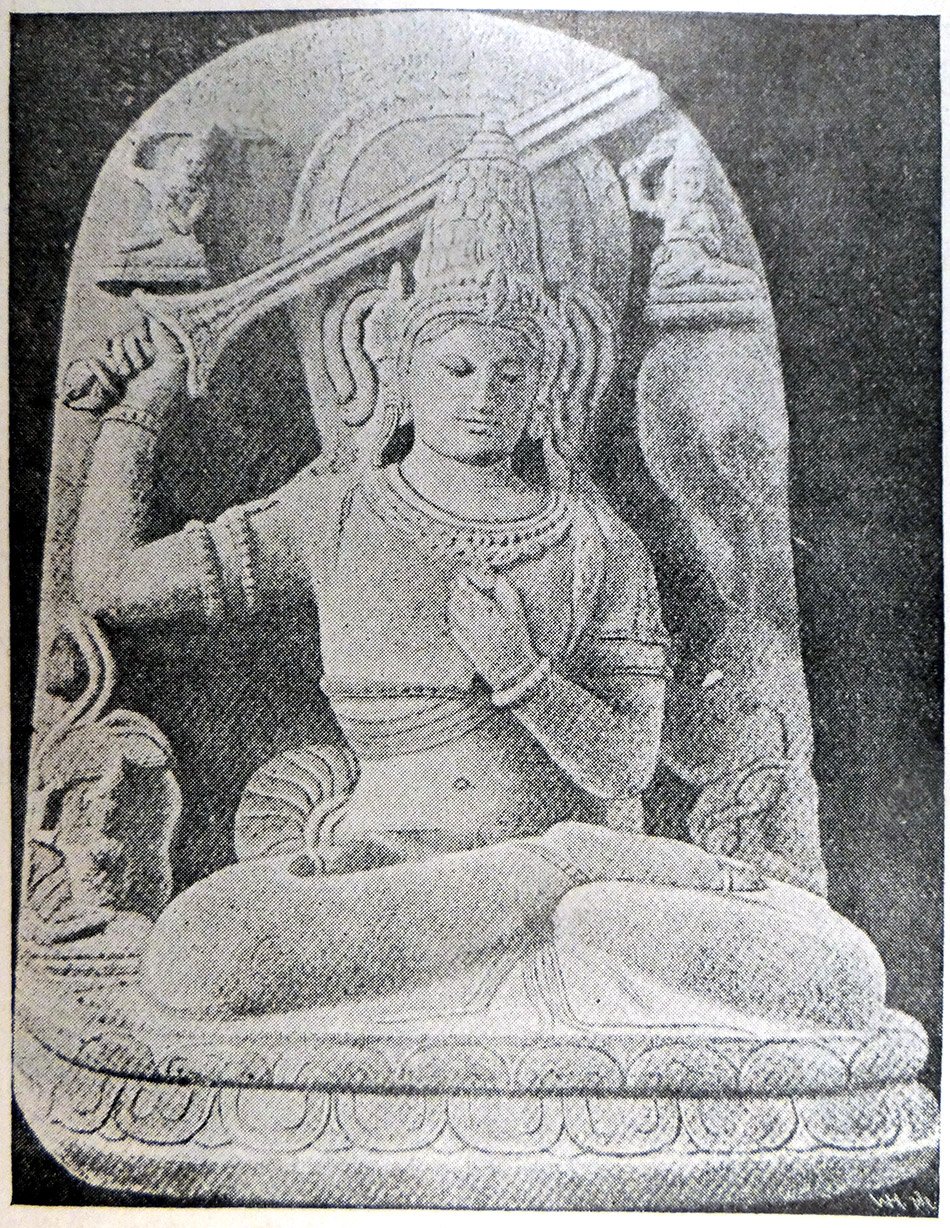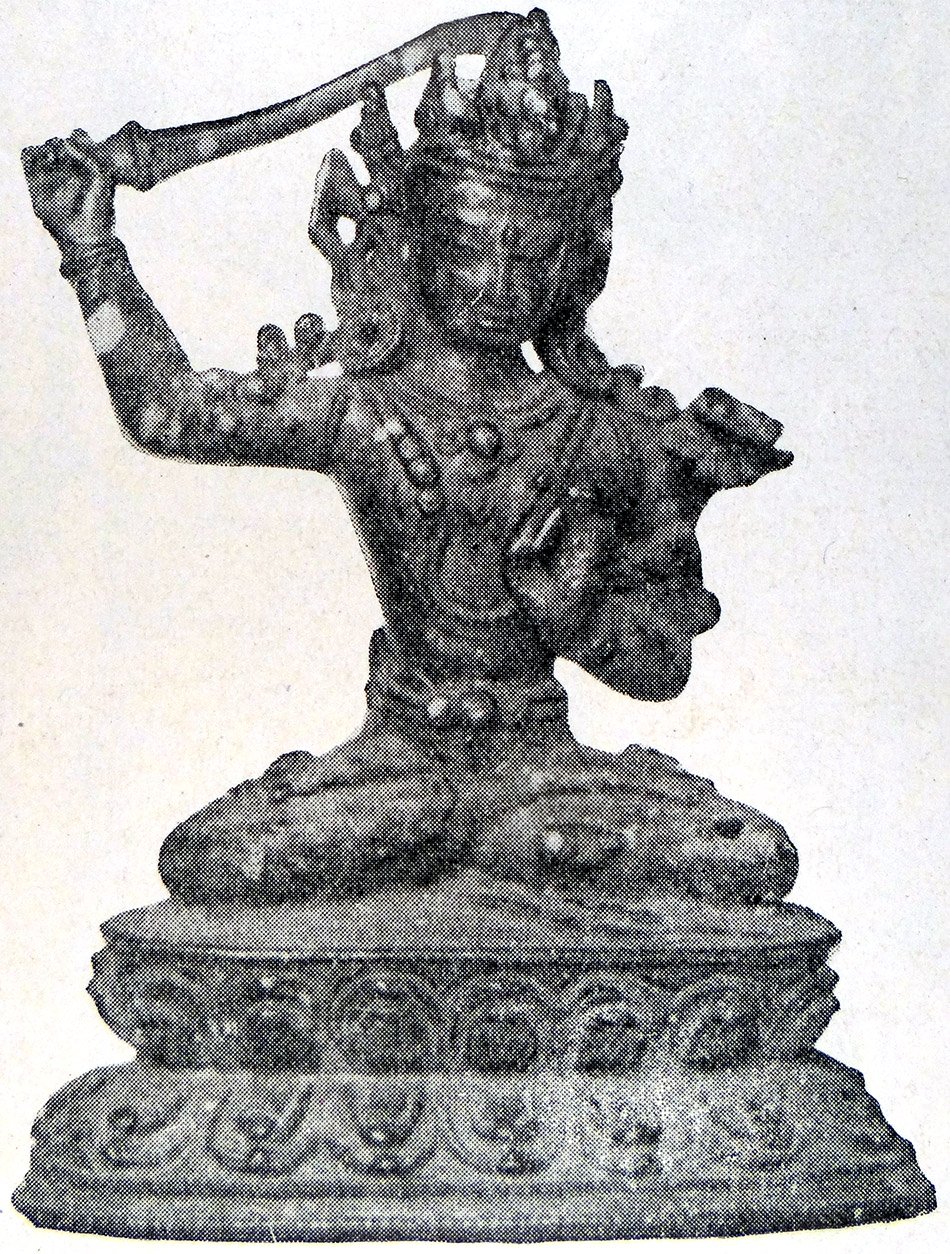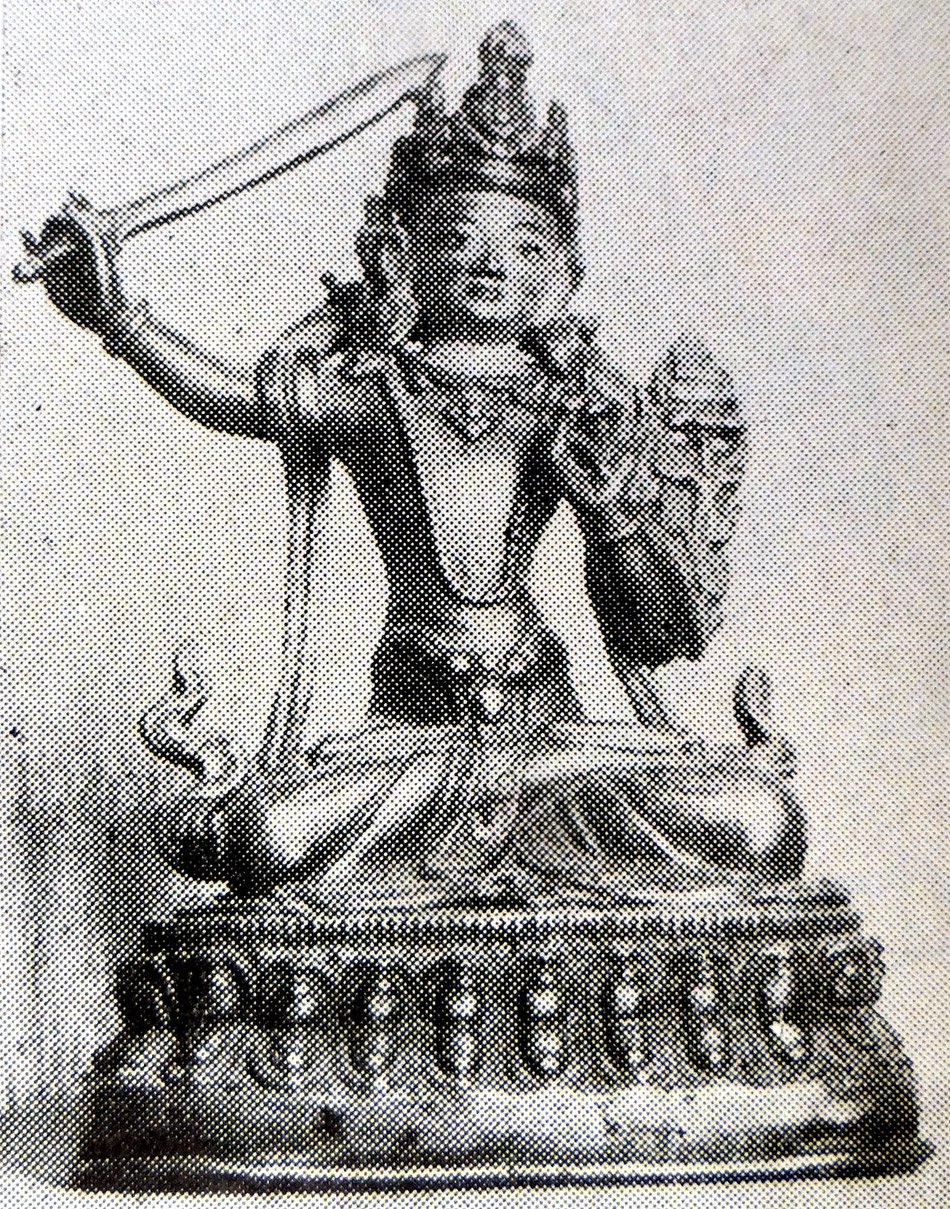The Indian Buddhist Iconography
by Benoytosh Bhattachacharyya | 1958 | 51,392 words | ISBN-10: 8173053138 | ISBN-13: 9788173053139
This page contains an iconography image of Manjushri Arapacana and represents figure 89 of the book Indian Buddhist Iconography, based on extracts of the Sadhanamala English translation. These plates and illustrations represent either photographs of sculptures or line-drawing reproductions of paintings or other representations of Buddhist artwork.
Figure 89 - Mañjuśrī Arapacana
 Figure 89: Arapacana (Dacca Museum) |
 Figure 90: Arapacana (Java) |
 Figure 91: Arapacana (Nepal) |
 Figure 92: Arapacana (Baroda Museum) |
Eight Sādhanas in the Sādhanamālā describe the form of this divinity [Arapacana], which is sometimes white and sometimes red. Arapacana sits always in the Vajraparyaṅka attitude, but when he sits on an animal he is called Prajñācakra. He is accompanied by the four divinities, Keśinī, Upakeśinī, Candraprabha and Sūryaprabha, and as the group of five originates from the five syllables, ‘A’, ‘R’, ‘P’, ‘C’ and ‘N’, the principal god is called Arapacana. When represented, the four companions of Arapacana resemble the principal god in all respects.
None of the forms of Mañjuśrī is so widely represented both in stone and in bronze as Arapacana. He is accompanied by his four attendants, but in some instances the companions are entirely absent. In one of the sculptures (Fig. 89) preserved in the Dacca Museum the four Dhyāni Buddhas, Vairocana, Ratnasambhava, Amitābha and Amoghasiddhi (besides the usual four companions) are pictured on the aureole behind, the centre at the top being occupied by one of the companion deities resembling the principal god. The Java figure (Fig. 90) belongs to this class and shows the four companions as required by the Sādhana.
The Nepal bronze (Fig 91) does not carry the book against the chest, but holds the stem of a lotus, which bears the book. The Baroda bronze (Fig. 92) also does likewise. Both these are without companions.
Arapacana is also called Sadyonubhava-Arapacana, or Sadyonubhava-Mañjuśrī. He is resplendent like the full moon, has a smiling face, is decked in all sorts of princely ornaments, and sits on a double lotus in the Vajraparyaṅka attitude. He brandishes the sword in his right hand, while his left holds the Prajñāpāramitā book against his chest. Jālinīkumāra (or Sūryaprabha) is in front of him, Candraprabha behind, Keśinī to the right and Upakeśinī to the left. All these four divinities are replicas of the principal god.
This Sādhana further adds that the principal god should originate from the first syllable ‘A’, Jālinīkumāra from the syllable ‘R’, Candraprabha from ‘P’, Keśiī from ‘C’ and Upakeśinī from ‘N’. Mañjuśrī should be in the middle, Jālinīkumāra in front, Candraprabha behind, Keśinī to the right and Upakeśinī to the left. All of them should have white colour and should be identical with the principal god in appearance.
Arapacana is popular in Tibet and China. In Tibet his sword in the right hand is replaced by the bell in a remarkable statuette.
Colour: white or red;
Āsana: vajraparyaṅka;
Companions: four;
Symbols: book and sword;
